Spring Pea Pasta
This is one of my favourite pasta dishes because it’s SO easy to make and it just tastes like spring.
My favourite kind of recipes are ones that require minimal ingredients and this one is just that. I can guarantee you that you’ll never find a recipe on this blog that has a laundry list of ingredients, because I’m a firm believer that fewer, GOOD quality ingredients make the best meals.
This is my play on “Pasta e Piselli” (Pasta with Peas). I replace the onion with leek because I feel like it gives a sweeter and more complex flavour. It’s all tied together with some cream, parmesan and basil and 20 minutes later you have an incredibly tasty dish on your table.
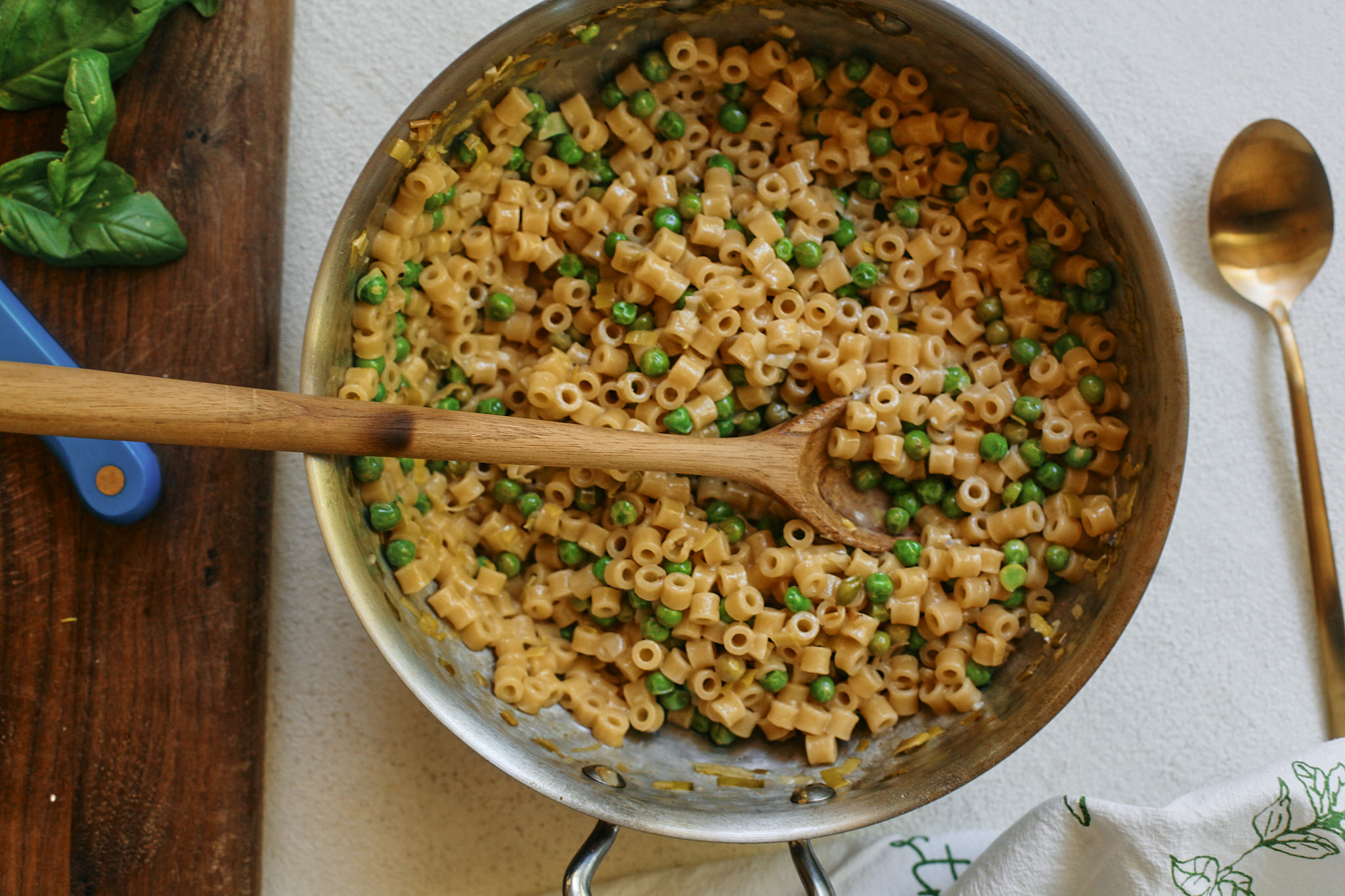
Tips for Cutting the Leek:
- I like to start by cutting off the dark green part on the top. You can totally save this for stocks later if you like!
- Then, keeping the root intact, slice down the middle lengthwise. The layers will fan out nicely and it makes it a lot easier to wash at this point! Run under cold water and make sure to remove all the dirt.
- It’s nice to keep the leeks chopped quite small for this so I like to do quarter moons. Slice the halves crosswise and then from there you can chop into the small quarter moons.
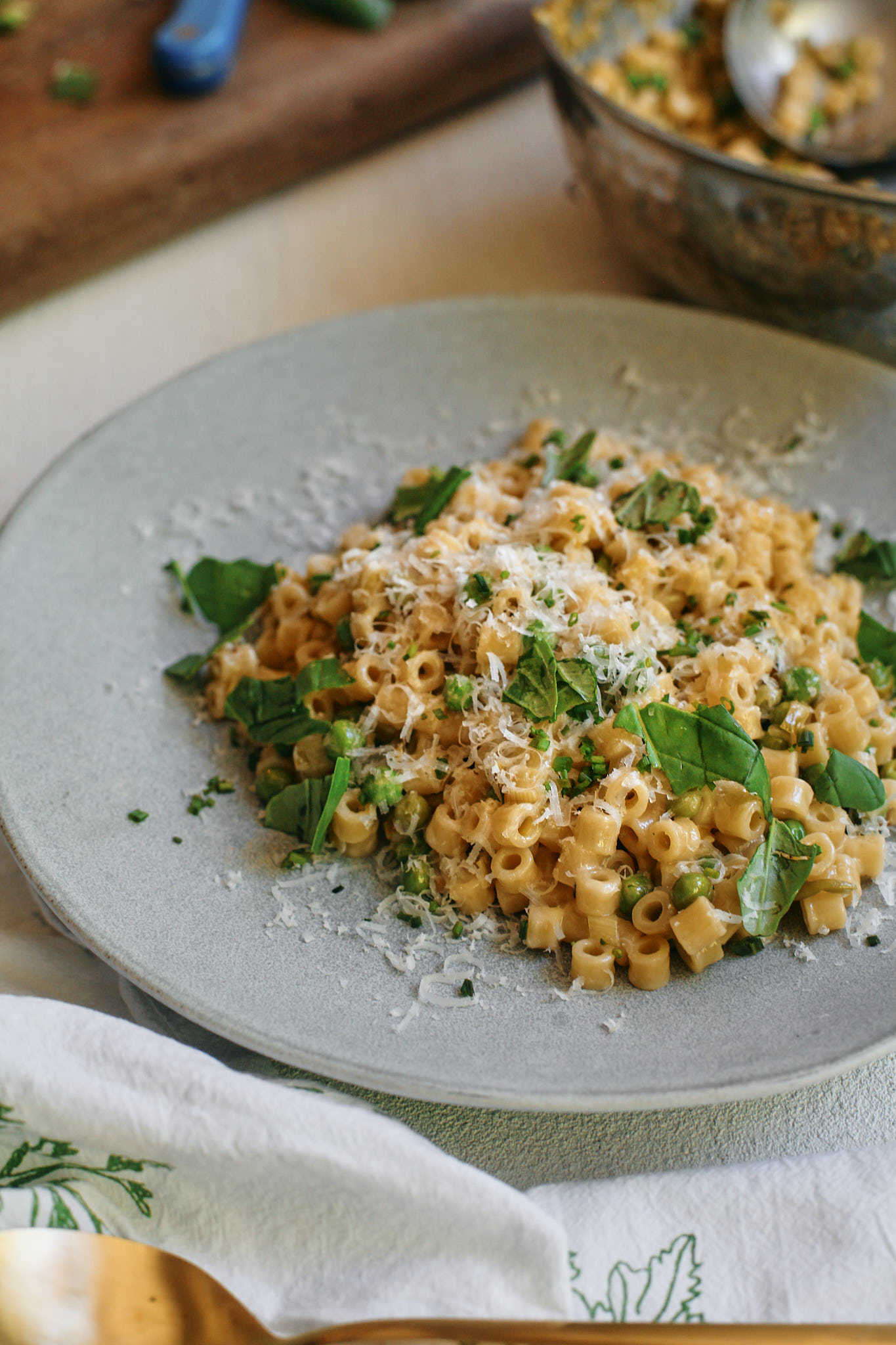
Fresh or Frozen Peas?
Either work! Here are some tips for both:
Fresh Peas:
- If you need to shell the peas, make sure to shell them just before cooking this dish so they’re super fresh!
- Look for peas that are bright green and firm!
- You don’t want to overcook this in the sauce otherwise they’ll become mushy and lose their colour
Frozen Peas:
- No need to thaw these out – just add directly into the sauce from the bag
- If there are some ice crystals, you can always place them in a colander and rinse in cold water before adding
- These won’t need quite as much time to cook as fresh peas so add these slightly later if you’re using frozen (they’re usually blanched before frozen)
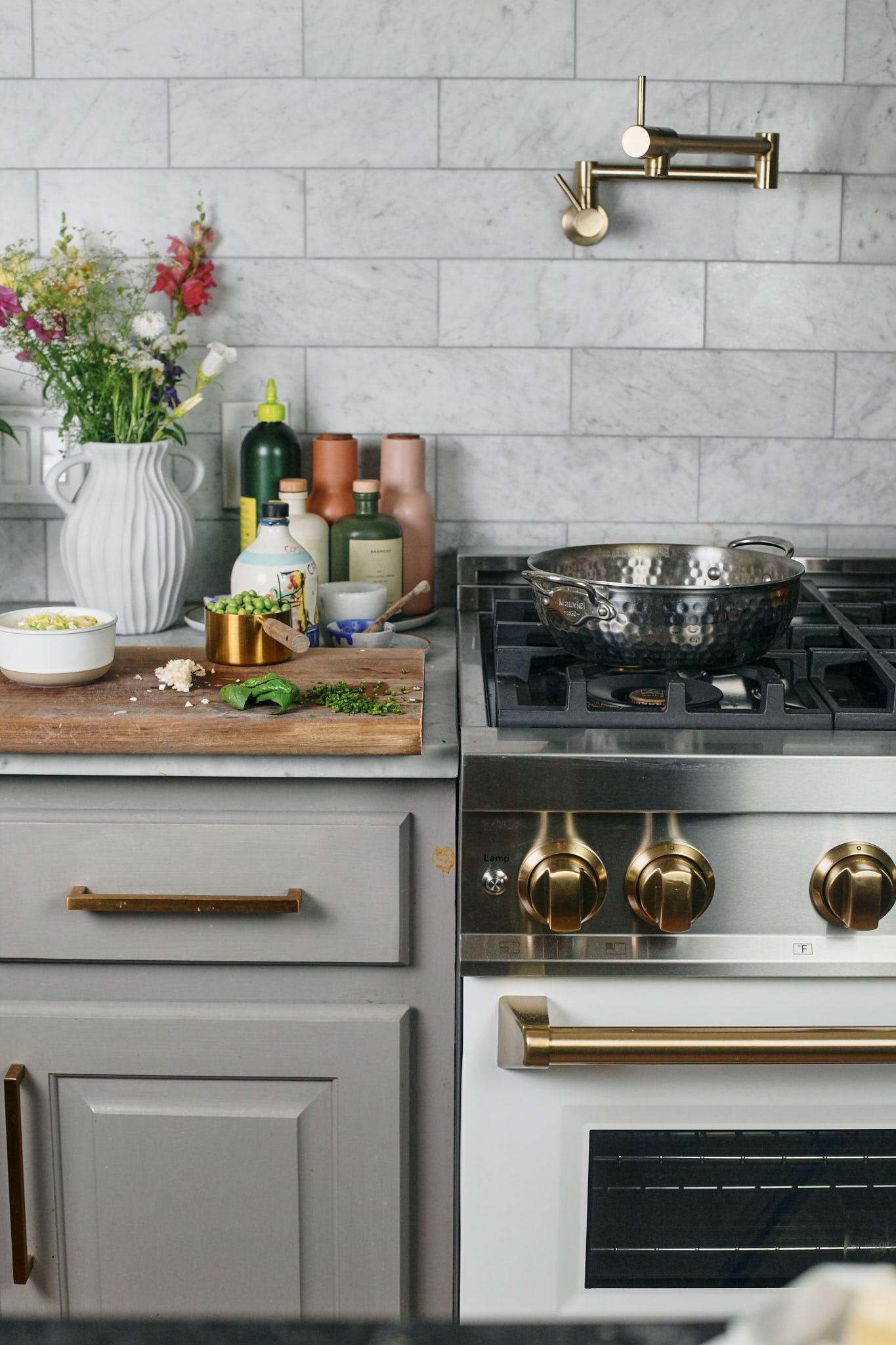
How to Make Spring Pea Pasta:
Step One:
Start by prepping your leek and garlic so you can have it ready to go into the pan for the sauce (as it comes together quite quickly). Cut off the dark green top of the leek, slice down the middle lengthwise and wash thoroughly. Slice down the middle again and then cut into quarter moons. Finely chop the 2 cloves of garlic.
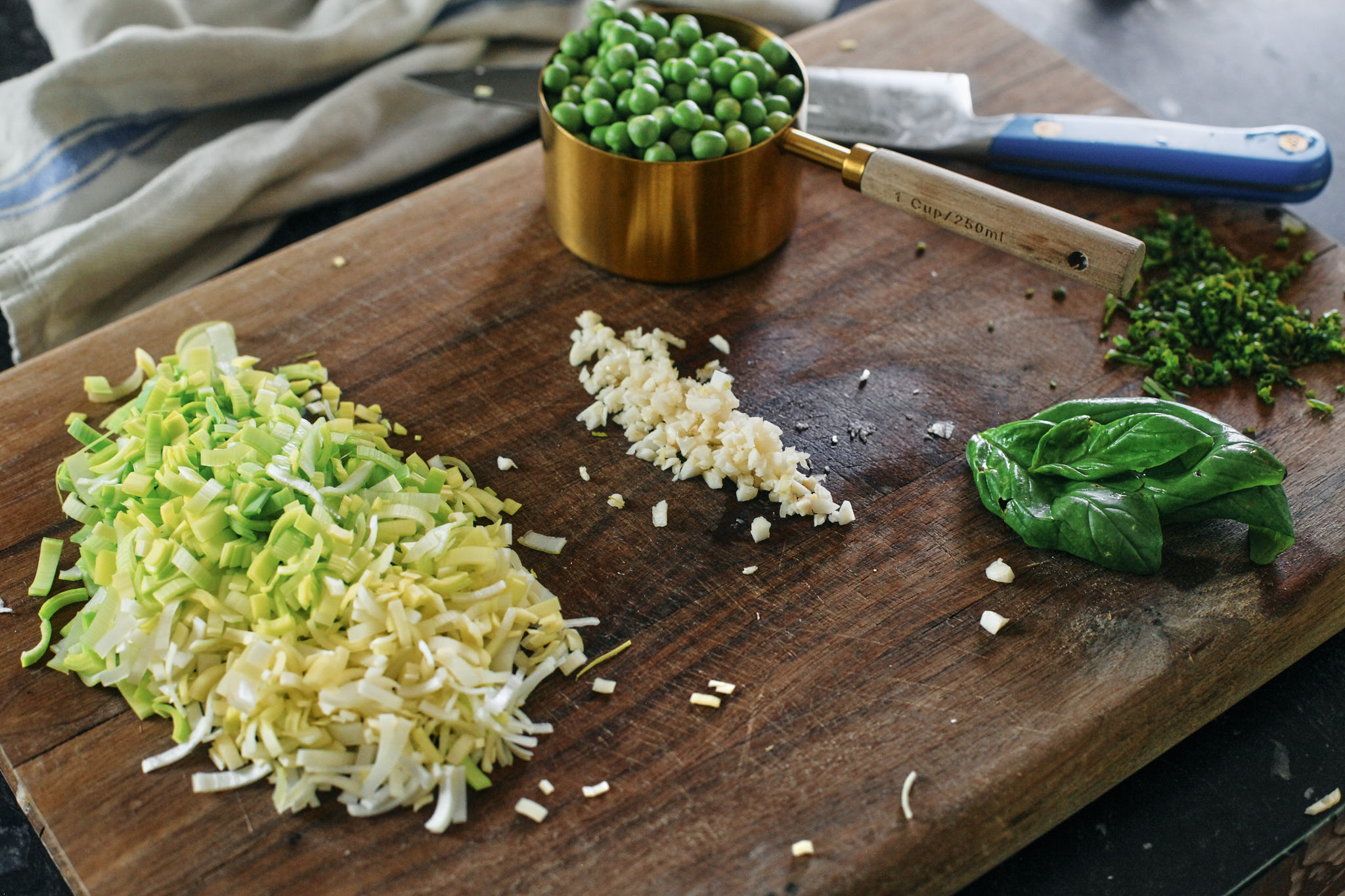
Step Two:
Fill a pot with water and start to boil. Once it’s reaches a boil, heavily salt and add small pasta of your choice until al dente.
Step Three:
Meanwhile, in a pan over medium heat, add the olive oil and butter until melted. Sautée the chopped leeks and garlic for about 5 minutes until slightly softened, stirring often. Season with salt and pepper.
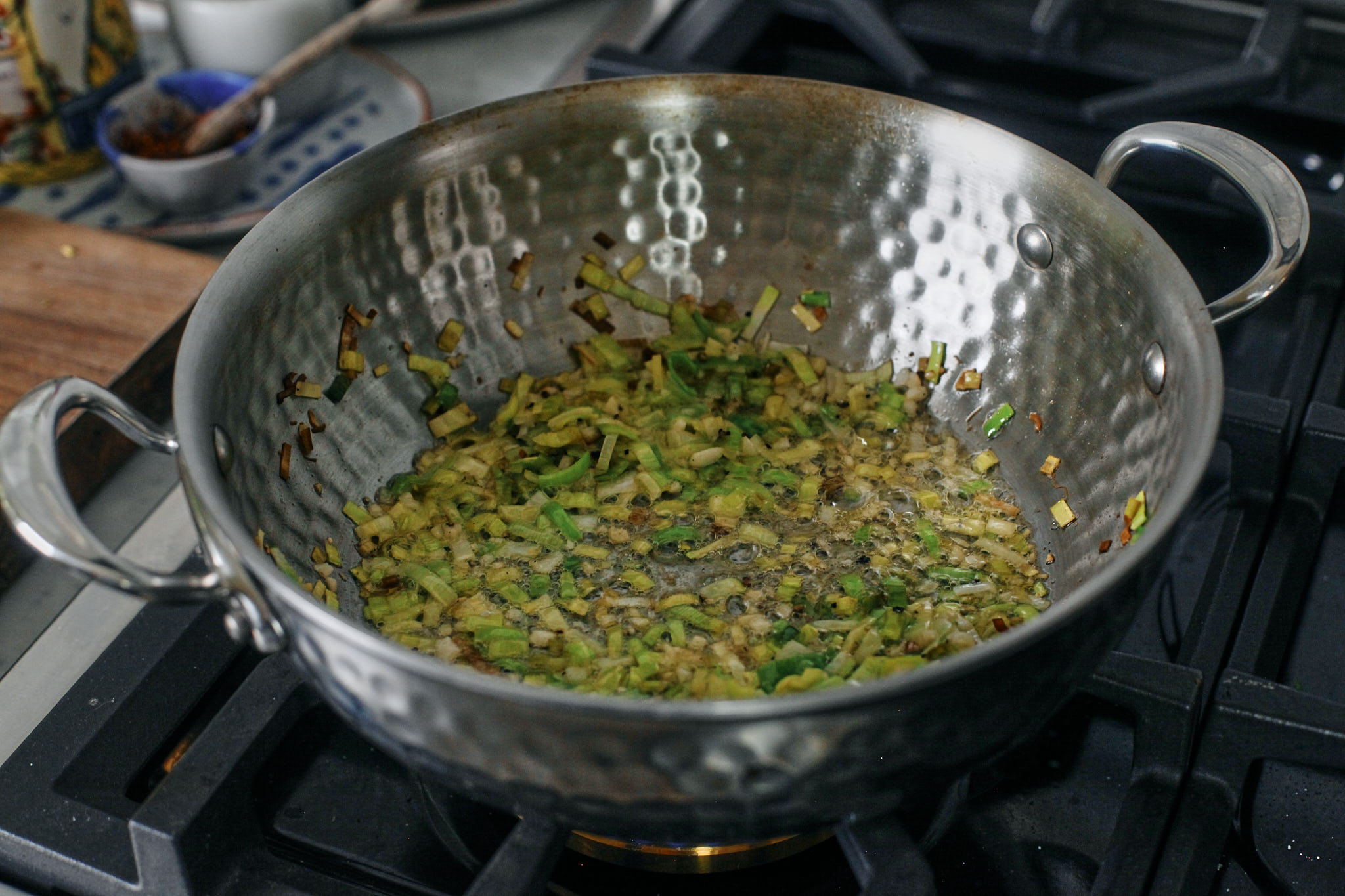
Step Four:
Deglaze the pan with white wine and broth and let this reduce while occasionally stirring. Add in the peas and cook until tender (about 5 minutes). If using frozen peas, let the wine and broth reduce for about 3-4 minutes and then add in the frozen peas for about 2-3 minutes more.
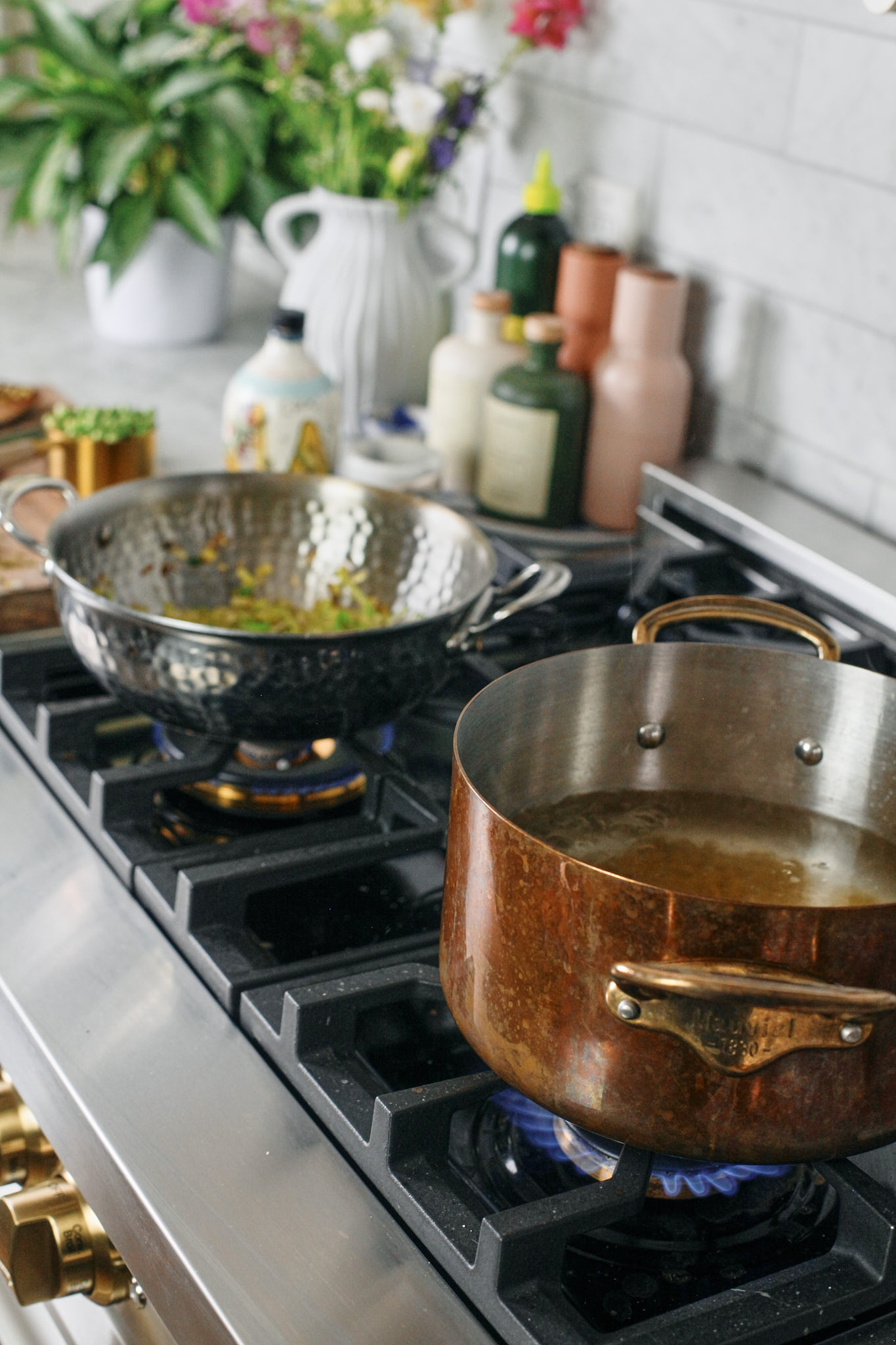
Step Five:
Add in the al dente pasta directly to the sauce, along with a ladle of the starchy pasta water and let this all come together over medium-high heat. Finish with cream and parmesan and stir to combine.
Step Six:
Garnish with basil, chives and more parmesan!

Storing Spring Pea Pasta:
- Transfer to an airtight container once it has cooled to room temperature
- Store it in the refrigerator for up to 3-4 days
- Reheat the pasta on the stove over low to medium heat, adding a splash of broth or cream to the sauce if needed. Remember to give it a taste and adjust seasoning as desired before serving.
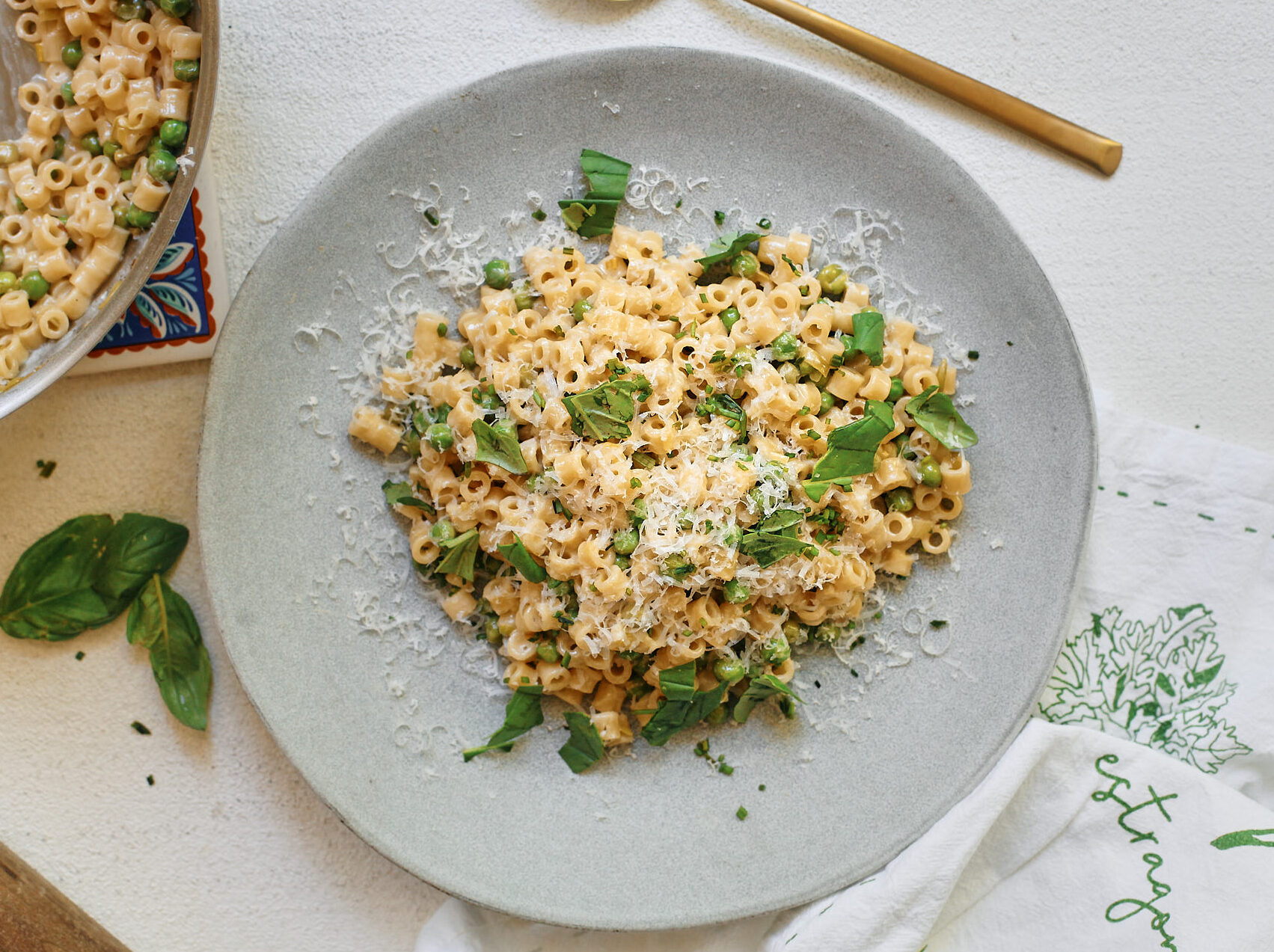
Substitutions for Spring Pea Pasta:
- Pasta: Feel free to swap the ditalini pasta for your favorite pasta shape, but try for a small pasta shape as I feel like that pairs best with the sauce
- Leeks If leeks are unavailable, you can substitute with finely chopped onions or shallots for a similar flavour profile
- Dairy-Free Option: For a dairy-free version, replace the butter, cream, and parmesan with plant-based alternatives like olive oil, coconut cream, and nutritional yeast
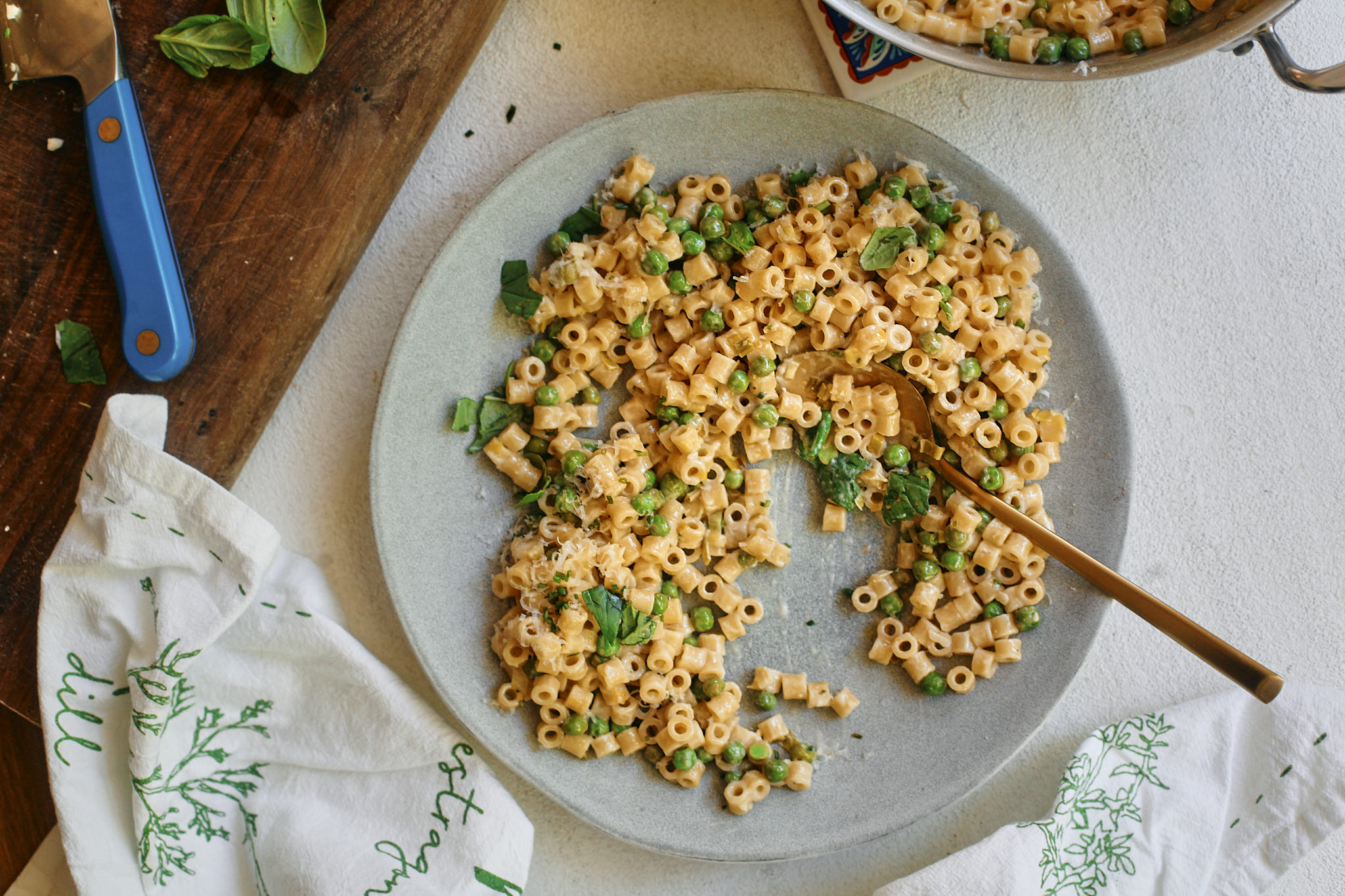
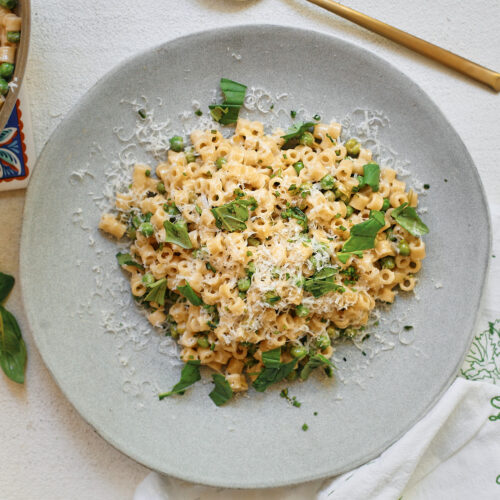
Spring Pea Pasta
Ingredients
- ½ lb pasta I like using ditalini or a small pasta
- 2 tbsp olive oil
- 2 tbsp butter
- 1 cup peas
- ½ leek just light green/white parts
- 2 cloves garlic
- Salt & pepper
- ½ cup dry white wine
- ½ cup broth
- ½ cup cream
- 1 cup grated parmesan
- Basil
- Chives
Instructions
- Start by prepping your leek and garlic so you can have it ready to go into the pan for the sauce (as it comes together quite quickly). Cut off the dark green top of the leek, slice down the middle lengthwise and wash thoroughly. Slice down the middle again and then cut into quarter moons. Finely chop the 2 cloves of garlic.
- Fill a pot with water and start to boil. Once it’s reaches a boil, heavily salt and add small pasta of your choice until al dente.
- Meanwhile, in a pan over medium heat, add the olive oil and butter until melted. Sautée the chopped leeks and garlic for about 5 minutes until slightly softened, stirring often. Season with salt and pepper.
- Deglaze the pan with white wine and broth and let this reduce while occasionally stirring. Add in the peas and cook until tender (about 5 minutes). If using frozen peas, let the wine and broth reduce for about 3-4 minutes and then add in the frozen peas for about 2-3 minutes more.
- Add in the al dente pasta directly to the sauce, along with a ladle of the starchy pasta water and let this all come together over medium-high heat. Finish with cream and parmesan and stir to combine.
- Garnish with basil, chives and more parmesan!


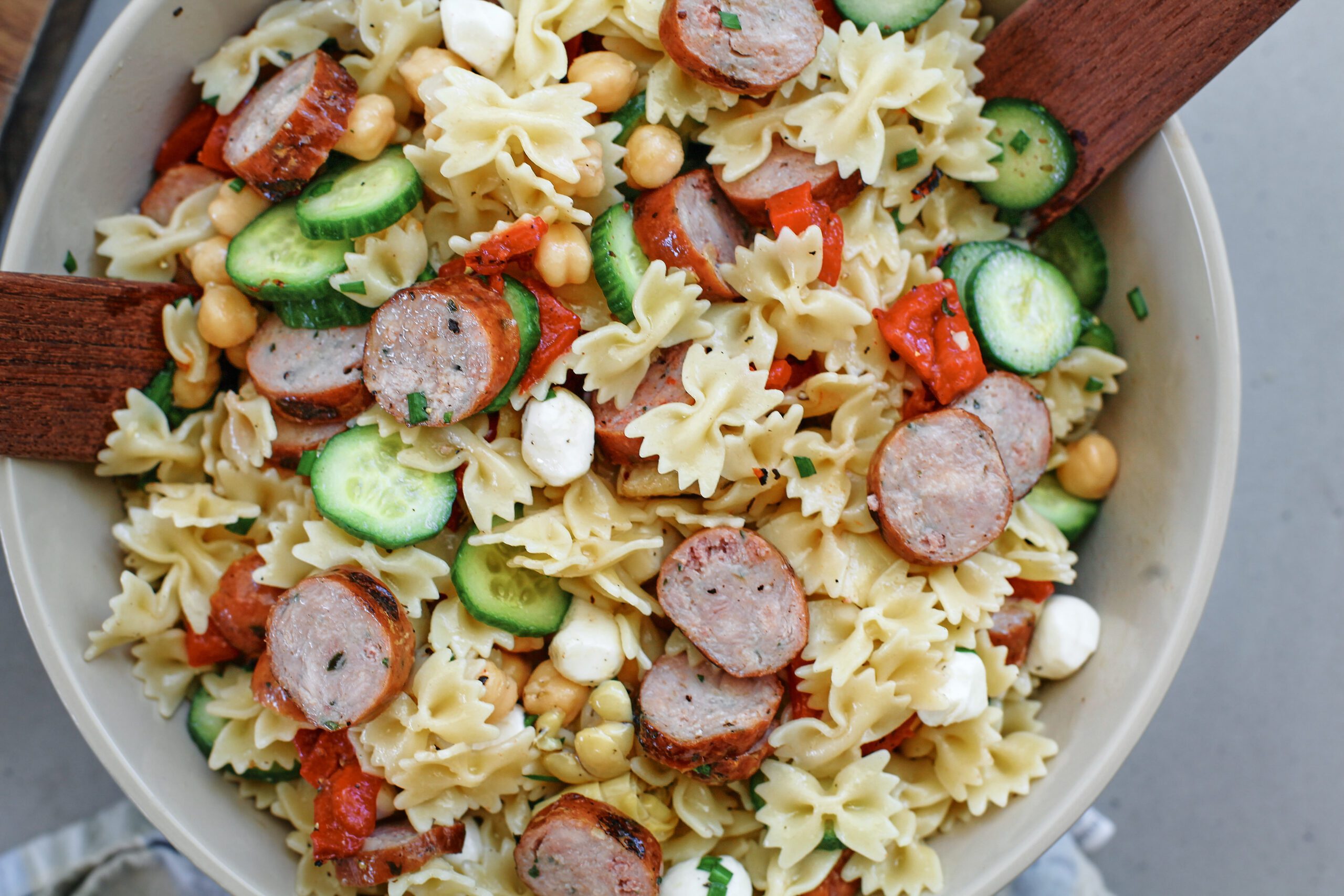






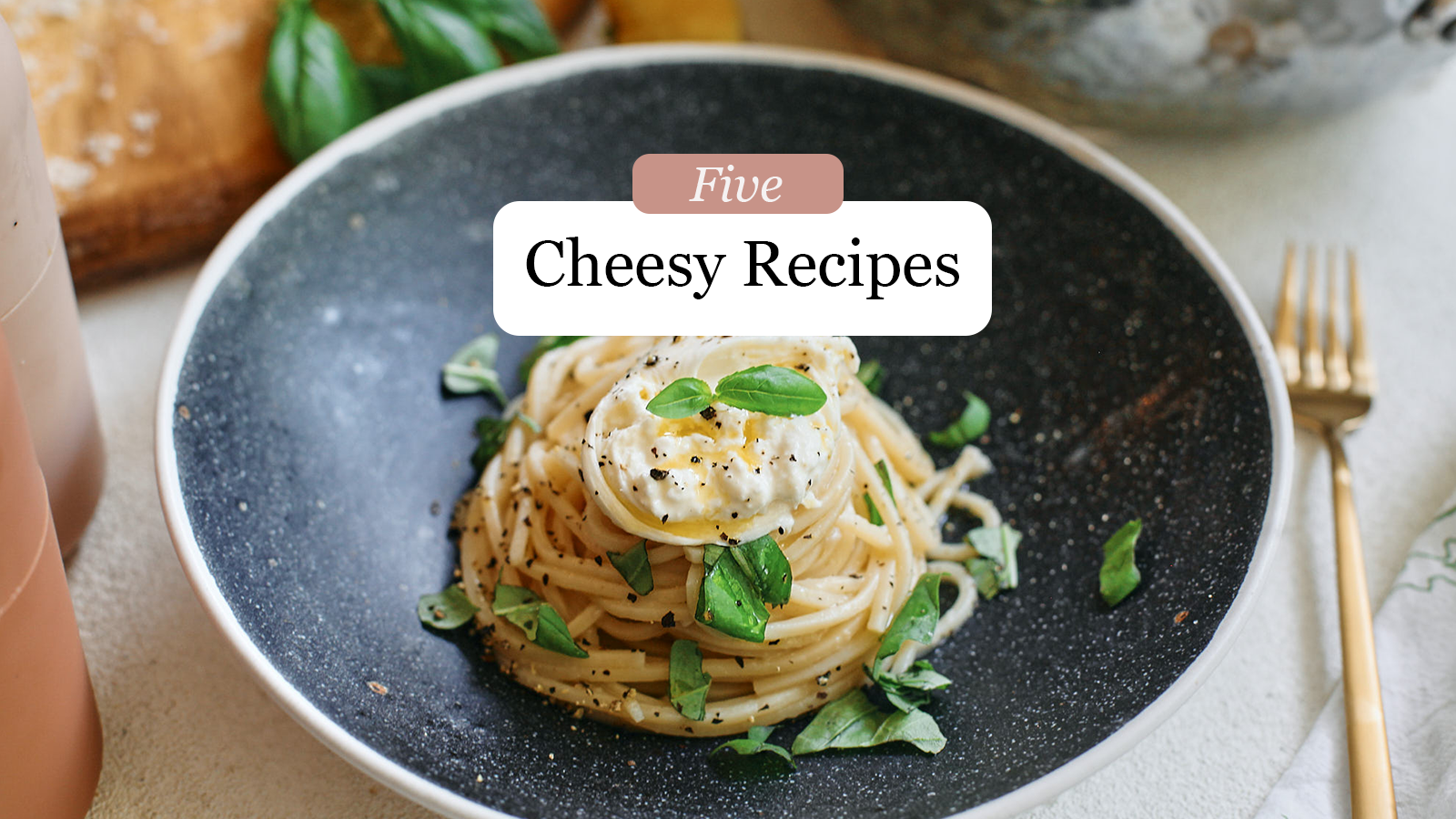
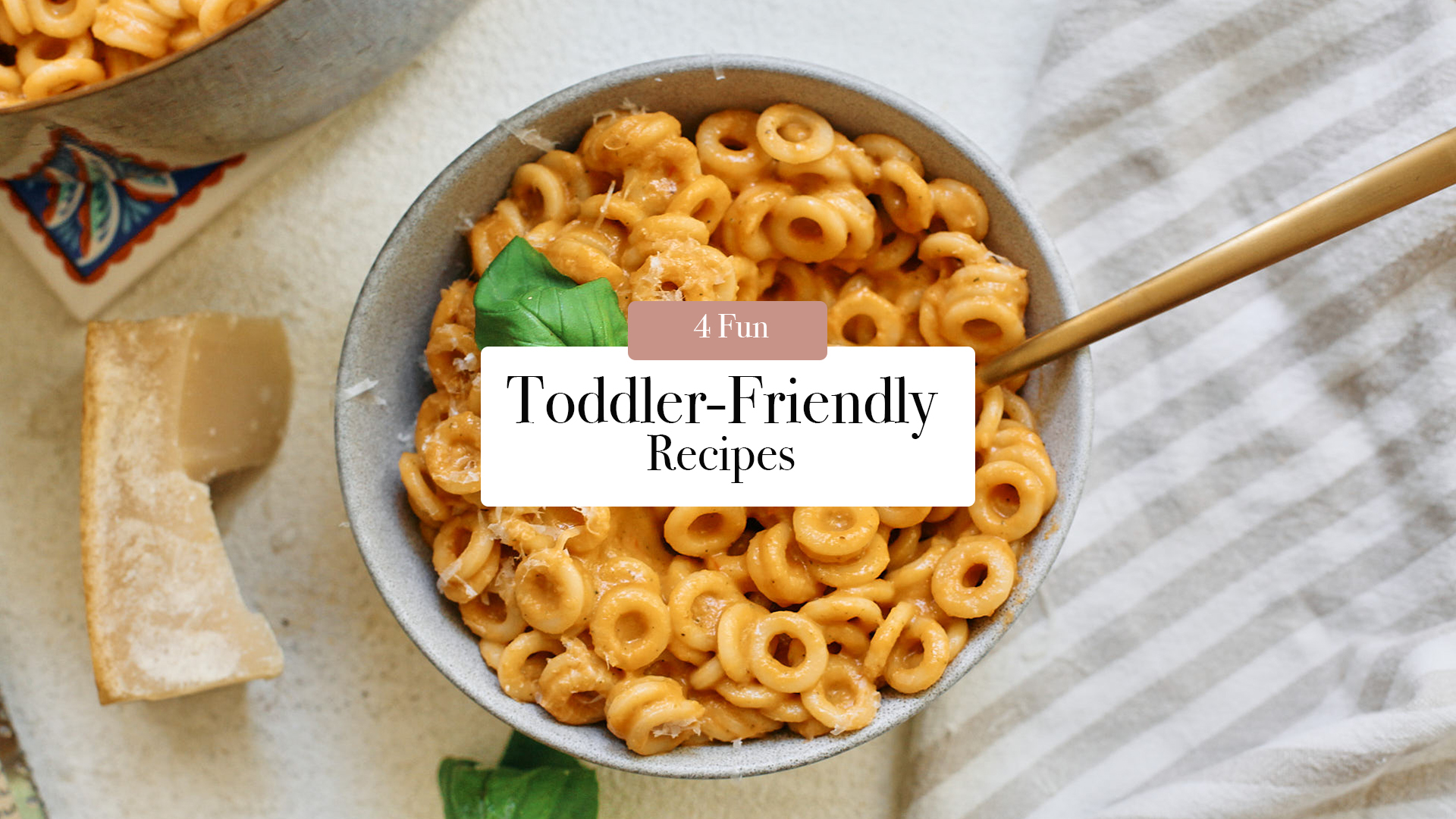
Easy and so delicious!
Thanks so much for trying this recipe out!
It tastes good, but it came out very soup-y when I made it – like when you put too much milk in a boxed mix of mac n cheese, and the sauce soups up in the bottom of the pot and doesn’t really stick to the surface of the noodles. This may be my fault rather than the fault of the recipe, though. I made a double recipe and used a dutch oven instead of a sautee pan, saucier, or rondeau, and the reduced surface area for evaporation combined with the extra volume from doubling the recipe may have meant that the wine and broth didn’t reduce as much as they should have. And as I’m putting away the leftovers, I can see that it has thickened somewhat, so maybe by the time I reheat the leftovers it will be behaving properly.
A couple notes for anyone trying this recipe:
Firstly, I think the author was a little crazy saying that the recipe as written serves 2. I’m pretty sure it will serve at least 4, so don’t double it like I did, thinking you won’t have enough for everyone in the family!
Secondly, as someone who often doesn’t bother with garnishes like basil and chives, I want to advise everyone to make sure NOT to forget the basil. Adding in shreds of fresh basil made a huge difference to the flavor profile, taking it from something a little dark and funky due to all the parmesan to a very light and spring-y flavor. The chives can probably still be left off, though, if you don’t have any on hand.